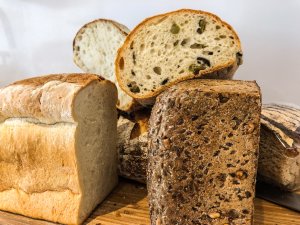What are the best substitutes for Vital Wheat Gluten?
Are you looking for a vital wheat gluten substitute? Try using Bread Flour, Chickpea Flour, Tofu, Xantham Gum, Psyllium Husk, Cornstarch, Ground Flaxseeds, Chia Seeds, or Gluten-free Flour.
You can use vital wheat gluten when you are bread making, you need a gluten-free baking product, or you are making homemade pasta. It is also used in the production of seitan (a meat substitute made from wheat gluten) and meat substitutes. And finally you can use it use it as a thickener, or binder and texture enhancement.
What is Vital Wheat Gluten?
Vital wheat gluten, often simply referred to as “gluten,” is a natural protein found in wheat. It is the main protein component in wheat flour and is responsible for giving dough its elasticity and strength when kneaded or mixed with water.
Now for the sciencey bit: It plays a crucial role during the baking process by forming a network of proteins that trap carbon dioxide gas produced by yeast or chemical leavening agents. This in turn causes dough to rise and creates a light and airy texture in baked goods.
Sometimes vital wheat gluten is extracted from wheat flour so it can be used as an ingredient on its own. Here are some of the most common ways it is used:
- Baking: Vital wheat gluten is often added to bread and other baked goods to improve their texture, increase their rise, and enhance their overall structure.
- Plant-Based Cooking: For those following a vegetarian or vegan diet, vital wheat gluten is used to create seitan or wheat meat, which is a high-protein meat substitute. When combined with water and seasoning, the gluten is kneaded into a dough and then simmered or baked to create a meat-like texture.
- Food Processing: It is used in some processed foods as a binder, stabilizer, or protein source.
- Gluten-Free Baking: In gluten-free baking, vital wheat gluten might be added to gluten-free flours to improve the elasticity and texture of the final product. However, this is less common, as gluten is avoided in gluten-free diets.
It’s important to note that vital wheat gluten is not suitable for individuals with celiac disease or gluten sensitivity, as it contains the same proteins that can cause adverse reactions in these individuals. For them, consumption of gluten can lead to digestive discomfort and other health issues.
Okay, before we look at your vital wheat gluten substitute options, let’s deal with that empty cupboard situation!
Where can I buy Vital Wheat Gluten?
If you want to be more prepared and ensure you don’t run out of vital wheat gluten then you should stock up now.
Nowadays most delicatessens and general supermarkets stock a wide variety of vital wheat gluten. Or if you prefer you can also purchase vital wheat gluten on-line.
So why not jump on and place your order today.
STOCK UP NOW!
High in protein, perfect for baking or making seitan and meat substitutes.
High-quality product with high-quality reviews!
Non-GMO, Vegan, and totally natural.
What can I substitute for Vital Wheat Gluten?
Here are some of the best ingredients to substitute the flavor and role that vital wheat gluten provides in your recipes.
- Bread Flour
- Chickpea Flour
- Tofu
- Xantham Gum
- Psyllium Husk
- Cornstarch
- Ground Flaxseeds
- Chia Seeds
- Gluten-free Flour
Vital Wheat Gluten substitutes?
Bread Flour
Bread flour is a pretty good substitute for vital wheat gluten in certain recipes, particularly if you’re aiming to increase the gluten content of your dough. Here’s how you can use bread flour as a substitute for vital wheat gluten:
When Baking Bread: When you’re baking bread and your recipe calls for vital wheat gluten, you can use bread flour instead. Bread flour contains a higher protein content (and therefore more gluten) than all-purpose flour. This makes it a great substitute for vital wheat gluten in bread recipes. Just follow these steps:
- Calculate the Amount: Check your recipe’s instructions for the amount of vital wheat gluten it calls for. You’ll want to use bread flour in an equivalent amount. For example, if your recipe calls for 2 tablespoons of vital wheat gluten, replace it with 2 tablespoons of bread flour.
- Adjust Water: Since bread flour contains its own natural gluten, you might need to adjust the amount of water slightly. Gluten absorbs water, so if you’re using bread flour instead of vital wheat gluten, you may need slightly less water. Use the same amount of water the recipe calls for and adjust as needed during mixing and kneading to achieve the desired dough consistency.
- Mix and Knead: Mix and knead your dough as usual. You should notice that the dough will be more elastic and have better structure. This is due to the higher gluten content in bread flour.
- Follow the Recipe: Proceed with the rest of the recipe as directed, including rising and baking times.
Remember that while using bread flour as a substitute for vital wheat gluten can work well in bread recipes, it might not be suitable for all applications, especially those where vital wheat gluten is used for its binding properties. Additionally, individuals with gluten sensitivity or celiac disease should avoid this substitution, as bread flour contains gluten.
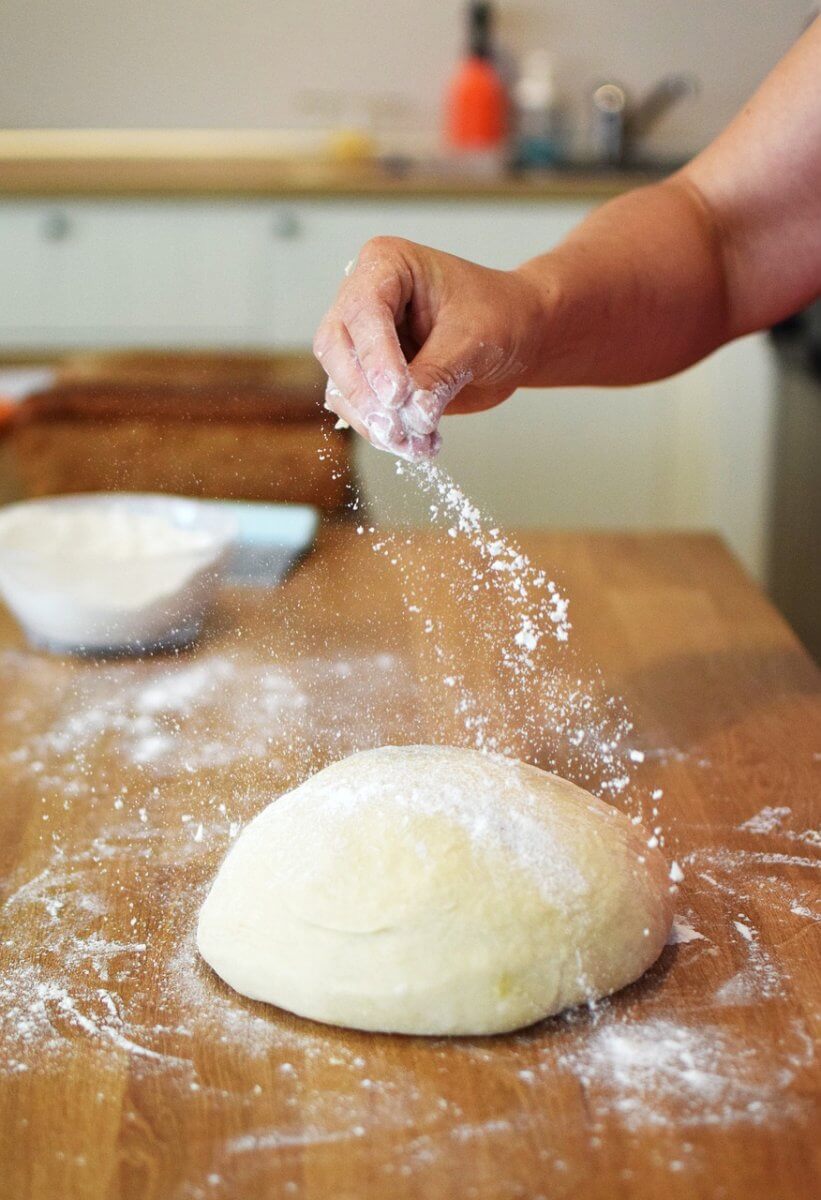
Chickpea Flour
Use chickpea flour as a gluten-free substitute, especially in recipes where you’re looking to create a meat substitute like seitan.
Chickpea Flour Meat Substitute
Chickpea flour can be used to create a meat-like texture similar to seitan. This is particularly useful for vegetarian and vegan dishes. Follow these steps:
Ingredients:
- 1 cup chickpea flour (also known as gram flour or besan)
- Water or vegetable broth
- Seasonings and spices of your choice
Cooking instructions:
Mix the Dough: In a mixing bowl, combine the chickpea flour with water or vegetable broth. Start with a small amount and gradually add more liquid until you achieve a thick, dough-like consistency.
Add Seasonings: Add your choice of seasonings and spices to flavor the dough. Common choices include garlic powder, onion powder, smoked paprika, nutritional yeast, soy sauce, or herbs.
Knead the Dough: Knead the dough to incorporate the seasonings and develop its texture. The kneading process helps develop the chickpea flour’s binding properties.
Cook the Dough:
- Depending on your desired outcome, you can shape the dough into patties, nuggets, or other shapes.
- Cook the dough by simmering it in vegetable broth or water until it firms up and reaches the desired texture. This might take around 20-30 minutes.
- Alternatively, you can bake the shaped dough in the oven at a moderate temperature until it’s cooked through and has a firmer texture.
Use in Recipes: Once cooked, you can use the chickpea flour meat substitute in various dishes such as stir-fries, sandwiches, curries, and more.
Remember, chickpea flour has a distinct flavor, so it will impart its own taste to the final dish. Experiment with seasonings and spices to create flavors that complement your dishes.
This substitution is ideal for those who are looking for a gluten-free meat alternative. It’s also important to note that chickpea flour has a different texture and binding quality compared to vital wheat gluten, so the results may not be identical, but it can still be a satisfying and nutritious alternative.
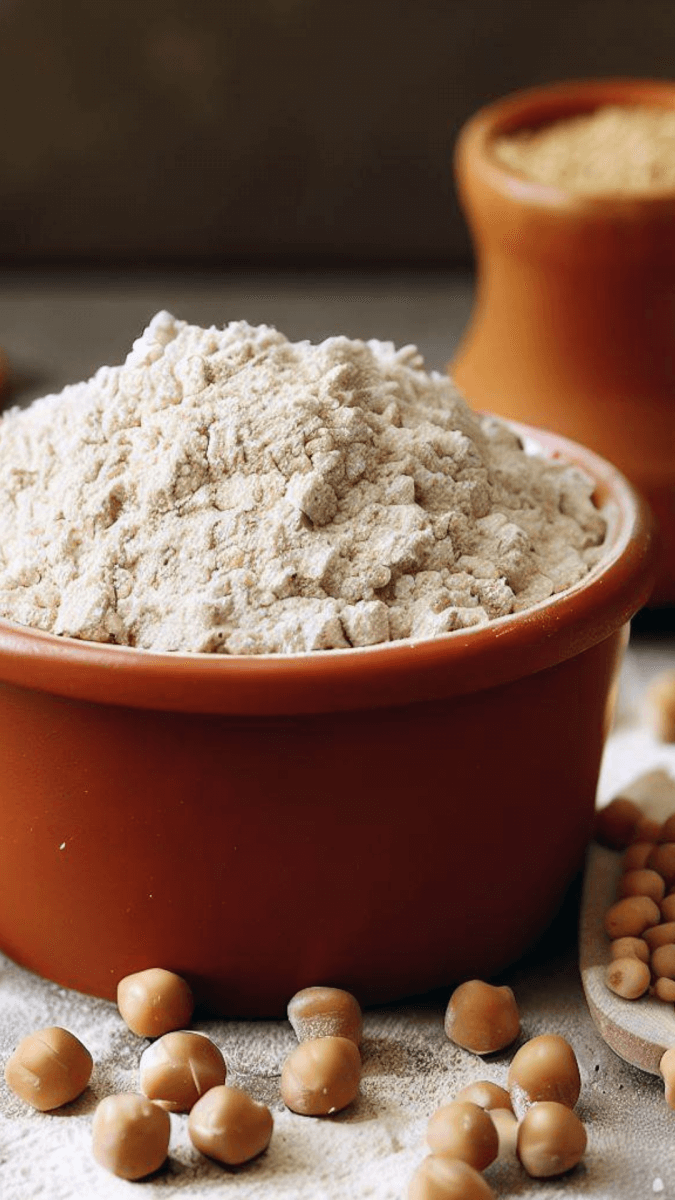
Tofu
Use tofu as substitute for vital wheat gluten, particularly when you’re looking to create a meat-like texture in vegetarian or vegan dishes.
Tofu-Based Meat Substitute:
Use to to create to create a meaty texture in various dishes. This approach is suitable for recipes that call for vital wheat gluten to achieve a chewy and protein-rich texture. Follow these steps:
Ingredients:
- Firm or extra-firm tofu
- Seasonings and spices of your choice
- Optional: soy sauce, nutritional yeast, liquid smoke, etc.
Cooking instructions:
Press the Tofu:
- Start by pressing the tofu to remove excess moisture. This will help the tofu absorb flavors and develop a better texture.
- Place the tofu between paper towels or kitchen towels and place a heavy object on top (like a plate with a weight on it). Leave it for about 15-30 minutes to press out the moisture.
Marinate the Tofu:
- Cut the pressed tofu into the desired shapes, such as cubes, strips, or patties.
- Create a marinade using your preferred seasonings, spices, and flavorings. Use soy sauce, garlic, onion powder, liquid smoke, nutritional yeast, or any other ingredients you like.
- Let the tofu marinate in the mixture for at least 30 minutes, or longer for more flavor penetration.
Cook the Tofu:
- You can cook the marinated tofu in various ways: pan-fry, bake, grill, or even stir-fry. Each method will result in a slightly different texture.
Use in Recipes:
- Once cooked, you can use the tofu meat substitute in a variety of dishes, such as stir-fries, sandwiches, tacos, salads, and more.
Tofu is a great source of protein and can be used to create a satisfying and nutritious meat substitute. However, keep in mind that tofu has a different texture and taste compared to vital wheat gluten, so the final result will not be the same. Adjust your seasonings and cooking methods to achieve the desired flavor and texture for your dishes.
This substitution is perfect for both gluten-free and plant-based diets.
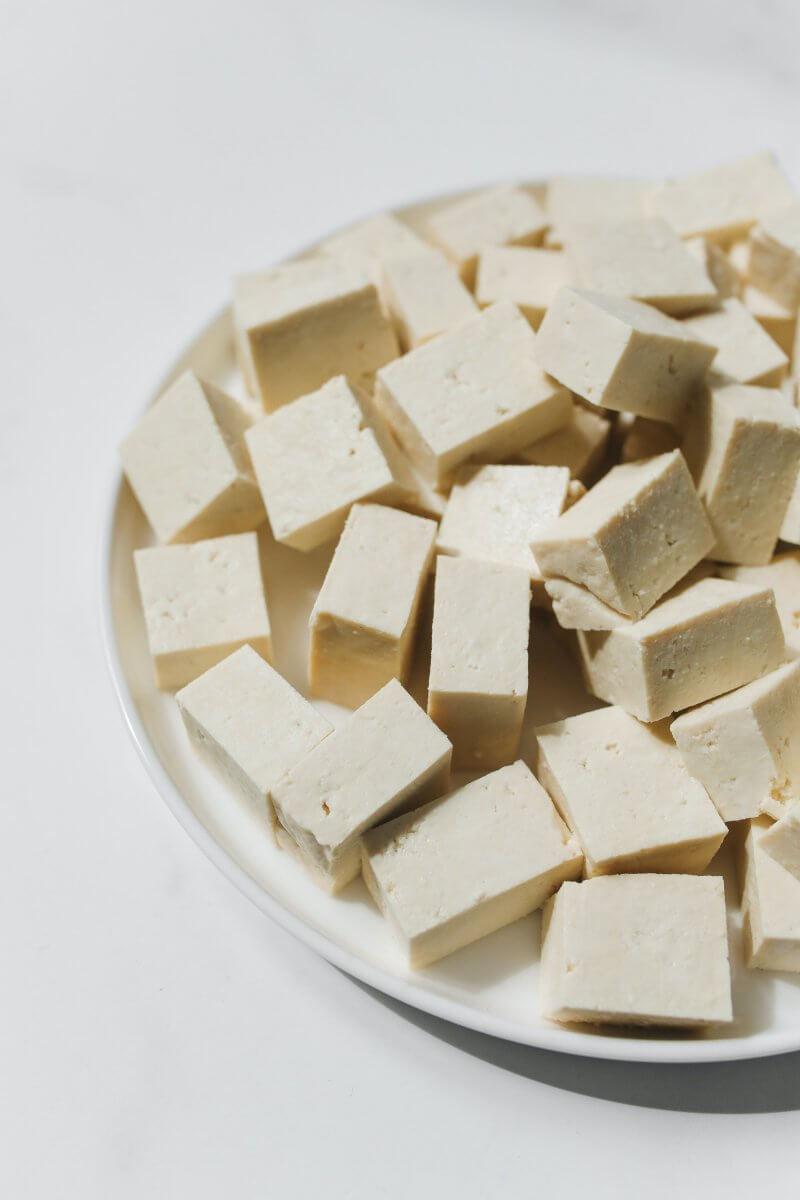
Xantham Gum
Xanthan gum is a common gluten-free substitute for vital wheat gluten, especially in baking. Use it to improve the texture, structure, and binding properties of gluten-free baked goods. Here’s how you can use xanthan gum as a substitute for vital wheat gluten:
Gluten-Free Baking:
Xanthan gum is often used in gluten-free baking to mimic the binding and elasticity that gluten provides. It’s particularly helpful in recipes that call for vital wheat gluten to improve the texture of the final product. Follow these steps:
Check the Recipe: Determine the amount of vital wheat gluten your recipe calls for.
Calculate the Xanthan Gum Amount: As a general guideline, you can use about 1/4 to 1/2 teaspoon of xanthan gum per cup of gluten-free flour. The exact amount will depend on the type of baked goods you’re making and the desired texture.
Mix with Dry Ingredients: If your recipe calls for mixing dry ingredients together, add the xanthan gum to the dry ingredients before combining them with the wet ingredients.
Adjust Liquid: Xanthan gum has the tendency to absorb moisture, so you may need to adjust the amount of liquid used. Start with the amount of liquid the recipe calls for and then gradually add more if needed. Continue until you achieve the desired batter or dough consistency.
Bake as Usual: Proceed with the rest of the recipe, including baking times and temperatures, as directed.
Xanthan gum helps create a smoother texture in gluten-free baked goods. It also improves moisture retention, and enhances the overall structure of the final product. It’s important to note that xanthan gum is highly effective in small quantities, so using too much can lead to a gummy or slimy texture.
Keep in mind that while xanthan gum is a helpful tool for improving gluten-free baking, it’s not a perfect substitute for all applications. It may not provide the same stretchiness or chewiness that vital wheat gluten imparts, especially in recipes where gluten plays a major structural role.
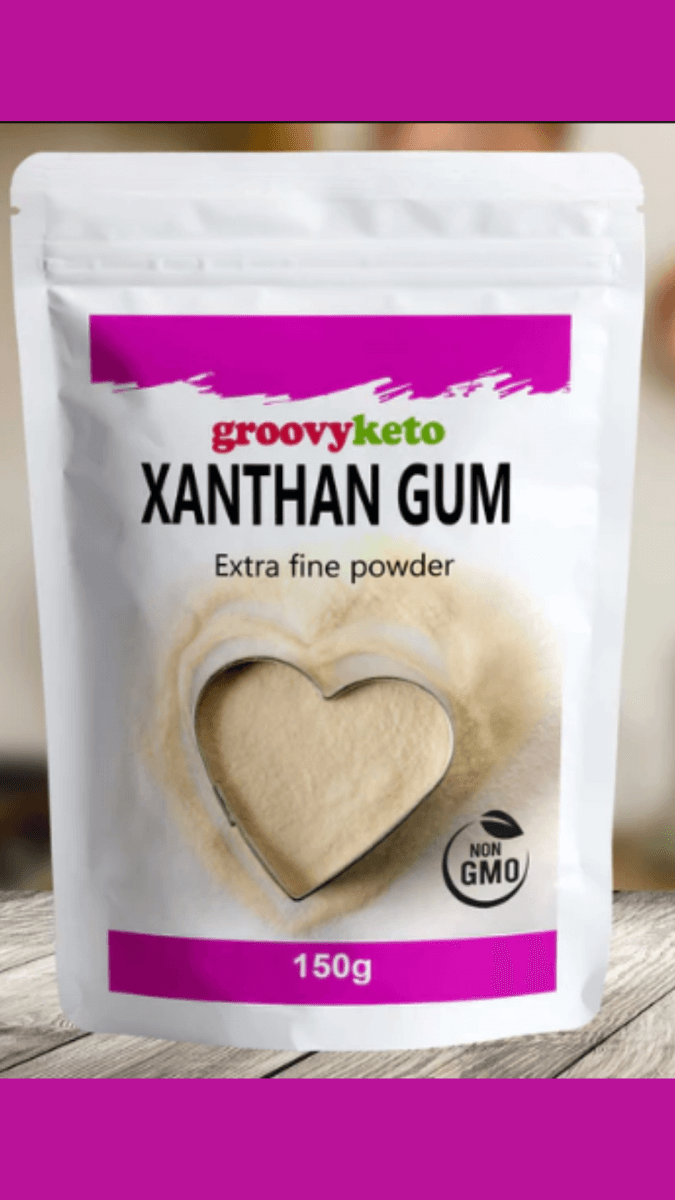
Psyllium Husk
Psyllium husk is another gluten-free option that can be used as a substitute for vital wheat gluten in certain recipes, particularly those that require binding and structure. It works well in gluten-free baking and can help improve the texture of baked goods. Here’s how you can use psyllium husk as a substitute for vital wheat gluten:
Gluten-Free Baking:
Psyllium husk can help provide binding and structure in gluten-free baked goods. It forms a gel-like substance when mixed with water, which can help mimic some of the characteristics of gluten. Here’s how to use psyllium husk in your recipes:
Check the Recipe: Determine the amount of vital wheat gluten your recipe calls for.
Calculate the Psyllium Husk Amount: As a general guideline, you can use about 1 to 2 teaspoons of psyllium husk per cup of gluten-free flour. The exact amount will depend on the recipe and the desired texture.
Mix with Liquid: Mix the psyllium husk with water to create a gel-like mixture. For each teaspoon of psyllium husk, you’ll need about 1 tablespoon of water. Let the mixture sit for a few minutes until it thickens and forms a gel.
Add to the Recipe: Once the psyllium husk mixture has formed a gel, add it to your recipe as you would the vital wheat gluten. Mix it into the dry ingredients before combining them with the wet ingredients.
Adjust Liquid: Like xanthan gum, psyllium husk absorbs moisture, so you may need to adjust the amount of liquid in your recipe to achieve the desired consistency.
Bake as Usual: Proceed with the rest of the recipe, including baking times and temperatures, as directed.
Keep in mind that psyllium husk has a distinct flavor, so it may impact the taste of your final product. Additionally, using too much psyllium husk can result in a gummy texture, so start with a smaller amount and adjust as needed based on your preferences and the specific recipe.
Psyllium husk is a beneficial source of dietary fiber and can contribute to the nutritional value of your baked goods. It’s a suitable option for those looking for gluten-free and plant-based alternatives.
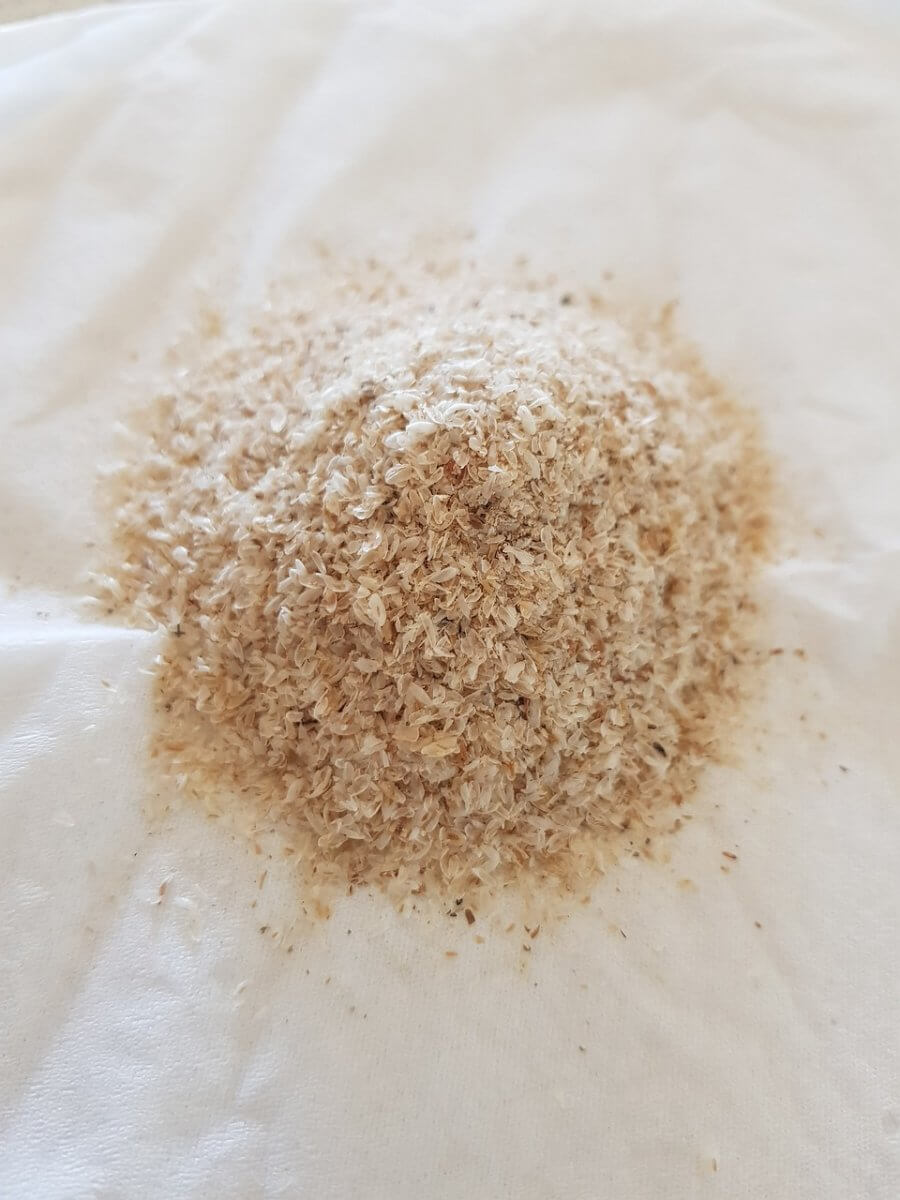
Cornstarch
Use cornstarch as a thickening agent, but note it isn’t a direct substitute for vital wheat gluten in terms of texture or binding properties. However, if you’re looking to thicken liquids or create a binding effect in certain dishes, here’s how you can use cornstarch as a substitute:
Thickening:
Cornstarch is commonly used to thicken sauces, soups, and gravies. It doesn’t have the same protein content or structure-building properties as vital wheat gluten, so it won’t provide the same elasticity or texture. However, it can help create a thicker consistency in your recipes:
Determine the Amount: Check your recipe for the amount of vital wheat gluten it calls for.
Mix with Liquid: Create a slurry by mixing cornstarch with a small amount of cold liquid, such as water or broth. Use about 1 to 2 tablespoons of cornstarch for every cup of liquid in your recipe.
Add to the Dish: Gradually add the cornstarch slurry to the dish you’re cooking, while stirring constantly. The heat will activate the thickening properties of the cornstarch.
Cook and Adjust: Continue to cook the dish until the desired thickness is achieved. Keep in mind that cornstarch-thickened dishes can become thicker as they cool, so avoid adding too much cornstarch.
Use as Needed: Use the cornstarch-thickened mixture in your recipe as intended. You can add to soups, stews, or sauces.
Remember that cornstarch is not a substitute for vital wheat gluten in terms of structure or binding. Therefore, you need to realise it won’t work well for applications like making bread or creating meat substitutes. It’s primarily used for thickening and creating a more viscous texture in liquid-based recipes.
Always adjust the amount of cornstarch to achieve the desired level of thickness. Don’t add too much, as it can lead to a starchy or gel-like texture.
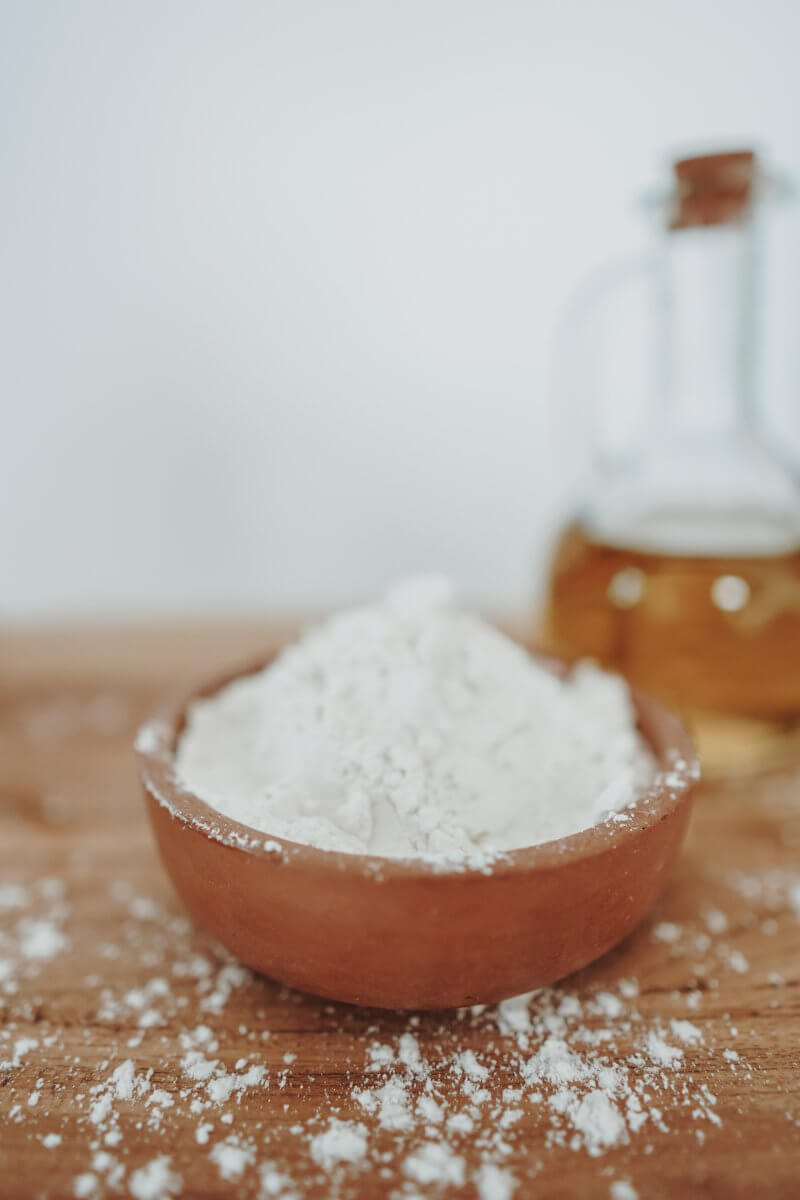
Ground Flaxseeds
Use ground flaxseeds as a binding agent in recipes in place of vital wheat gluten. However, keep in mind that ground flaxseeds have a different texture and flavor, so the results won’t be identical. Here’s how you can use ground flaxseeds as a substitute for vital wheat gluten:
Binding Agent:
Ground flaxseeds are often used as an egg substitute in recipes due to their natural binding properties. They can be a useful alternative when you’re looking to improve the structure and binding of your dishes:
Prepare Flax Egg: To replace one egg, mix 1 tablespoon of ground flaxseeds with 3 tablespoons of water. Let the mixture sit for a few minutes until it forms a gel-like consistency. This is known as a “flax egg.”
Incorporate into Recipe: Add the prepared flax egg to your recipe as you would an egg. Mix it into the wet ingredients before combining them with the dry ingredients.
Allow Time to Bind: Once you’ve added the flax egg to your recipe, give it a little time to bind and thicken before baking or cooking.
Ground flaxseeds can help provide some structure and binding in recipes like muffins, pancakes, cookies, and other baked goods. Remember that the flavor of flaxseeds can be noticeable in the final product, so it’s best used in recipes where the nutty flavor complements the dish.
It’s also important to note that while ground flaxseeds offer binding, they don’t provide the same stretchiness or elasticity as vital wheat gluten. Therefore, they may not work well in recipes that rely heavily on gluten’s properties, such as bread or seitan.
Ground flaxseeds are an excellent source of omega-3 fatty acids and dietary fiber. This makes them a delicious and nutritious addition to your recipes.
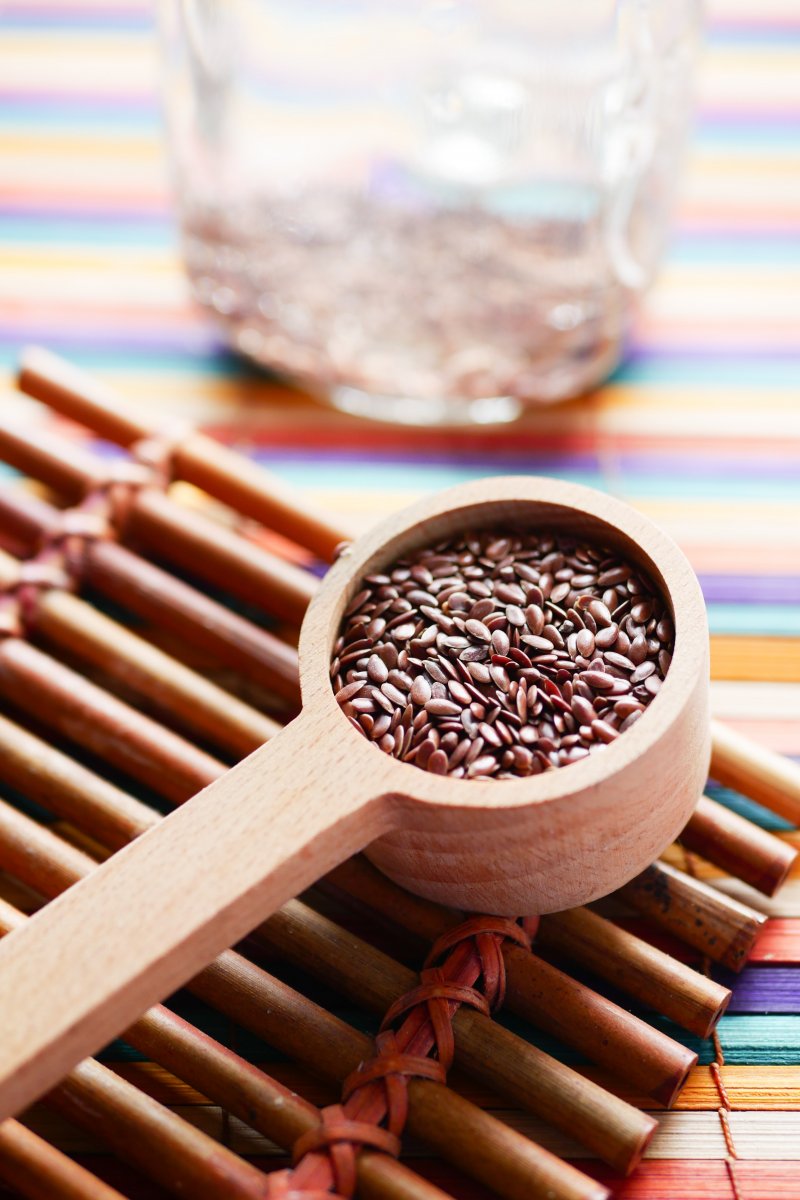
Chia Seeds
Use ground chia seeds as a binding agent in recipes, similar to ground flaxseeds. Chia seeds can provide some of the binding properties that vital wheat gluten offers, although they have a distinct texture and flavor. Here’s how you can use ground chia seeds as a substitute for vital wheat gluten:
Binding Agent:
Ground chia seeds can be used as a binding agent and can help improve the structure of certain dishes:
Prepare Chia Gel: To replace one egg, mix 1 tablespoon of ground chia seeds with about 3 tablespoons of water. Stir well and let the mixture sit for about 10-15 minutes until it forms a gel-like consistency. This is known as a “chia gel.”
Incorporate into Recipe: Add the prepared chia gel to your recipe as you would an egg. Mix it into the wet ingredients before combining them with the dry ingredients.
Allow Time to Bind: Give the chia gel a little time to bind and thicken before baking or cooking.
Use chia seeds to provide some structure and binding in recipes like muffins, pancakes, cookies, and other baked goods. Like ground flaxseeds, chia seeds have a slightly nutty flavor that can be noticeable in the final product.
Just like with flaxseeds, it’s important to note that while ground chia seeds offer binding, they don’t provide the same stretchiness or elasticity as vital wheat gluten. They may not work well in recipes that heavily rely on gluten’s properties, such as bread or seitan.
Ground chia seeds are rich in omega-3 fatty acids, fiber, and other nutrients, making them a nutritious addition to your recipes. If you’re looking for an egg-free and gluten-free binding agent, ground chia seeds can be a suitable option.
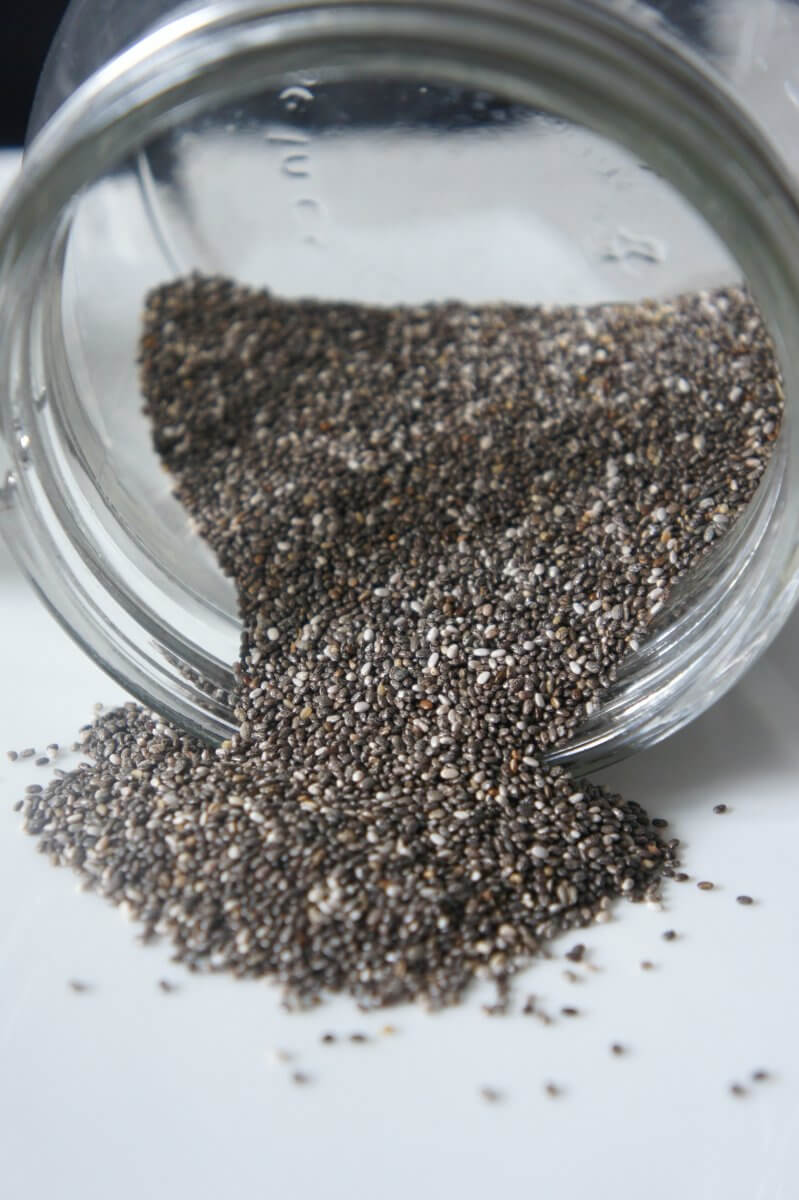
Gluten-free Flour
Use gluten-free flour as a substitute for vital wheat gluten in recipes, particularly in gluten-free baking. However, it’s important to note that gluten-free flour doesn’t have the same protein content or structure-building properties as vital wheat gluten, so the results may vary depending on the recipe. Here’s how you can use gluten-free flour as a substitute:
Gluten-Free Baking:
When using gluten-free flour as a substitute for vital wheat gluten, you’re primarily focusing on the flour component of the recipe. Gluten-free flour blends typically consist of a mixture of different flours and starches to achieve a texture similar to wheat flour. Here’s how to use gluten-free flour as a substitute:
Choose the Right Flour Blend: Select a gluten-free flour blend that’s suitable for the type of recipe you’re making. Gluten-free flour blends can vary in composition, so choose one that matches the characteristics you’re aiming for in your dish.
Determine the Amount: Check your recipe for the amount of vital wheat gluten it calls for.
Replace the Flour: Substitute the gluten-free flour blend for the regular flour in the recipe. Follow the recipe instructions, adjusting for the type of gluten-free flour blend you’re using.
Additional Ingredients: Some gluten-free flour blends might already contain additives like xanthan gum or guar gum, which help improve the texture and structure of baked goods. If your blend doesn’t contain these additives, you might need to add a small amount to mimic the binding effect of vital wheat gluten.
Adjust Liquid and Texture: Gluten-free flours may absorb more liquid than regular wheat flour. Depending on the blend you’re using, you might need to adjust the amount of liquid to achieve the desired batter or dough consistency.
Bake as Usual: Proceed with the rest of the recipe, including baking times and temperatures, as directed.
Keep in mind that gluten-free flours can vary significantly in terms of taste, texture, and performance, so some experimentation might be needed to find the right blend for your specific recipe. Additionally, gluten-free baking can be more delicate and may require adjustments to achieve the desired results.
Gluten-free flour blends are suitable for those with gluten sensitivity or celiac disease, as they don’t contain gluten proteins.
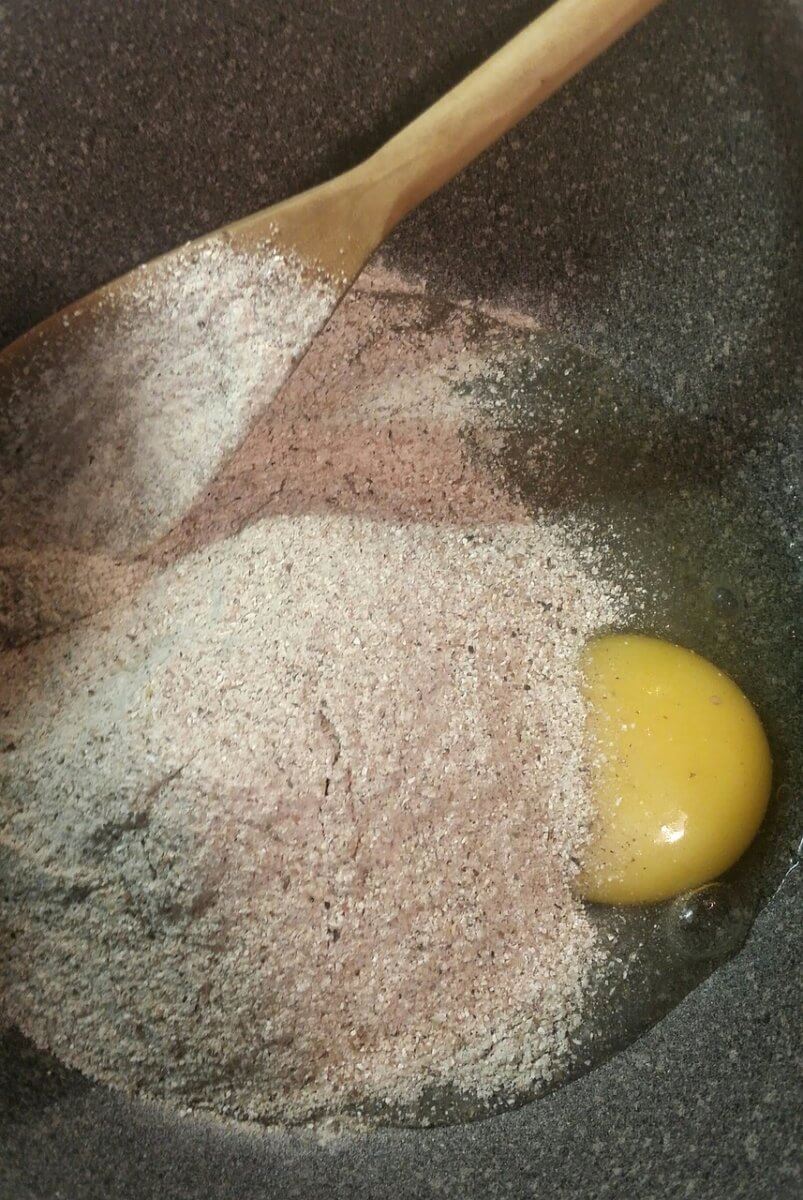
Additional info
Vital wheat gluten can be used for various purposes in cooking and baking. Here are some common uses for vital wheat gluten:
- Bread and Baking: One of the primary uses of vital wheat gluten is in baking bread. Add it to bread recipes to improve the dough’s elasticity, rise, and overall structure. This is particularly useful when working with whole grain flours or low-gluten flours, as it helps create a more traditional bread texture.
- Seitan: Vital wheat gluten is a key ingredient in making seitan, a popular meat substitute in vegetarian and vegan diets. Seitan has a chewy and meat-like texture, making it suitable for dishes like stir-fries, sandwiches, and stews. To make seitan, combine vital wheat gluten with water and seasonings, knead the mixture into a dough, and then cook it by simmering or baking.
- Meat Analogues: In addition to seitan, you can use vital wheat gluten to create other meat-like textures for plant-based dishes. By varying the seasonings and cooking methods, you can achieve a range of textures resembling different types of meats.
- Gluten-Free Baking: While it might seem counterintuitive, some gluten-free bakers use small amounts of vital wheat gluten in their recipes to improve the texture of gluten-free baked goods. However, this approach is not suitable for those with celiac disease or severe gluten sensitivity.
- Thickening: Use vital wheat gluten as a thickening agent in sauces and soups. It can help give a slightly thicker consistency to liquids.
- Binder and Texture Enhancer: When making vegetarian patties, burgers, or meatballs, vital wheat gluten can act as a binder, helping hold the ingredients together and improving the texture.
- Homemade Pasta: Incorporating vital wheat gluten into homemade pasta dough can enhance the pasta’s chewiness and help it hold its shape during cooking.
- Texture Improvement: Adding a small amount of vital wheat gluten to certain recipes can improve the texture of the final product, such as adding it to muffin or pancake batters for a fluffier result.
FAQs
What is vital wheat gluten also know as?
Vital wheat gluten is like the superhero of baking ingredients, especially for making bread. It’s sometimes also called gluten flour or wheat gluten flour. Basically, it’s the protein part of wheat with all the starch removed. This means it’s super high in gluten – the stuff that gives bread its elasticity and helps it rise and hold its shape.
When you add vital wheat gluten to bread dough, it boosts the dough’s ability to stretch and rise, resulting in a softer, chewier texture in your finished loaves. It’s also handy for vegetarian cooking because it can be used to make meat substitutes like seitan. So, whether you’re into baking homemade bread or experimenting with plant-based meals, vital wheat gluten is your go-to for adding that extra spring and structure!
Can I replace gluten-free with flour?
If you’re diving into gluten-free cooking or baking and a recipe calls for gluten-free flour, you’ve got a bunch of options to play with. There are loads of gluten-free flours out there these days, like almond flour, rice flour, coconut flour, and even chickpea flour. Each brings its own unique flavor and texture to the table.
Now, here’s the fun part: you can often swap these flours one-for-one in recipes that call for regular flour. Just keep in mind that because gluten-free flours behave differently, your end result might be a bit denser or have a slightly different texture than if you were using wheat flour. But hey, that’s part of the adventure, right?
If you’re whipping up something like cookies or pancakes, you might not notice much of a difference. But for things like bread or cakes, you might want to experiment a bit to find the blend that gives you the taste and texture you love. So grab your apron, get creative, and enjoy the delicious journey of gluten-free baking!
What is the trick to baking with gluten-free flour?
The trick is to embrace the unique characteristics of gluten-free flours. They can be a bit finicky because they lack the stretchy gluten that holds things together in traditional baking.
- First off, mix it up! Blend different gluten-free flours together for a more balanced texture and flavor. A common combo might include rice flour, tapioca starch, and maybe a touch of almond flour or coconut flour for extra richness.
- Next, add a little binder. Since gluten-free flours can be crumbly, throw in a spoonful of xanthan gum or guar gum. These natural thickeners help mimic gluten’s binding power, keeping your creations from falling apart.
- Don’t forget to hydrate! Gluten-free flours often absorb more liquid than wheat flour, so your batter or dough might need a bit more moisture. Play around with adding extra liquid or maybe an extra egg to keep things nice and moist.
- And last but not least, be patient! Gluten-free goodies might need a little extra love and attention. Keep an eye on baking times and temperatures to make sure everything bakes up just right.
Follow these steps and you should end up with a great bake!
Summary for Vital Wheat Gluten substitutes
It’s important to keep in mind that vital wheat gluten is not suitable for individuals with celiac disease or gluten sensitivity, as it contains gluten proteins that can cause adverse reactions. If you’re new to using vital wheat gluten, it’s a good idea to start with small amounts and experiment to see how it affects your recipes and the desired outcomes.
Okay – that’s you all sorted with suitable substitutes for vital wheat gluten.
In conclusion, vital wheat gluten is a natural protein found in wheat that provides elasticity and structure to dough, primarily in baking. Use it in bread recipes and other baked goods to create a desirable texture and rise. However, for those with celiac disease or gluten sensitivity, vital wheat gluten is not suitable as it contains gluten proteins that can cause adverse reactions.
When looking for substitutes for vital wheat gluten, consider your specific needs and the purpose of the ingredient in your recipe:
- Baking and Texture Improvement
- Meat Substitutes and Plant-Based Cooking
- Gluten-Free Baking
- Binding and Structure
- Thickening
- Egg Substitution
- Gluten-Free Baking with Flour
Each substitute has its own unique characteristics and may work better for certain types of recipes than others. Experimentation is often necessary to achieve the desired outcomes when substituting vital wheat gluten. Always keep in mind any dietary restrictions or sensitivities, and adjust quantities and methods accordingly.
We have gathered together a lot more facts on ingredients such as herbs, spices, oils, nuts, etc. if you would like to learn some more.
Table of Contents
- What are the best substitutes for Vital Wheat Gluten?
- What is Vital Wheat Gluten?
- Where can I buy Vital Wheat Gluten?
- What can I substitute for Vital Wheat Gluten?
- Vital Wheat Gluten substitutes?
- Additional info
- FAQs
- Summary for Vital Wheat Gluten substitutes
